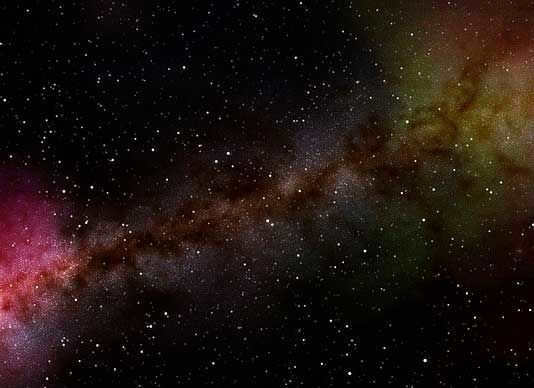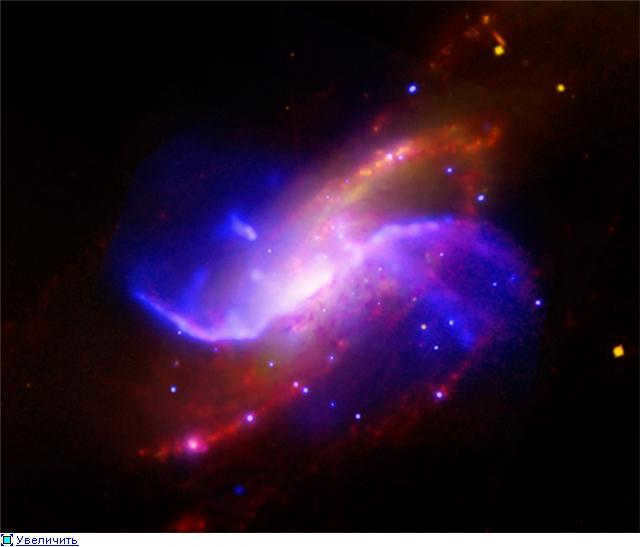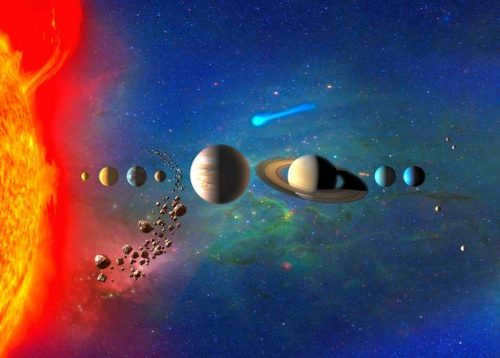Since ancient times, humans have been curious about what lies beyond our reach, high above our heads. As time went on, our understanding of the universe expanded, leading to even more questions.
The earliest recorded speculations about the Earth’s rotation by modern historians can be traced back to the 5th century BC. Numerous astronomers and physicists have attempted to provide evidence for our planet’s rotation. Debates on this topic lasted for centuries. Some religious leaders opposed these new ideas and even put the wise men on trial, accusing them of blasphemy. Those who refused to renounce their heretical beliefs faced severe punishment.
It was only at the close of the 16th century when it reached the point of being nearly inconceivable to deny the proof put forth by Copernicus, Newton, Bruno, Galileo, Kepler, and numerous other advocates of the theory of rotation. However, the argument persisted until the conclusion of the 17th century, when the heliocentric theory of the world’s existence was ultimately embraced. The introduction of the initial telescope solidified the sun’s position at the heart of the system, and scientists were no longer put to death for their beliefs.
Following the creation of the telescope by Galileo Galilei, the field of astronomy experienced a rapid acceleration in its development. Consequently, by the conclusion of the 17th century, evidence had been presented confirming the existence of a planetary system, with several planets, including Earth, discovered to possess satellites. Additionally, a detailed map of the Moon’s surface, Earth’s own satellite, was formulated. Notably, the renowned Red Spot was identified on the planet Jupiter. Concurrently, scientists began to conduct initial calculations pertaining to the vastness of outer space. Furthermore, the first endeavor to estimate the speed of light was undertaken during this period.
In the first half of the 18th century, scientists, physicists, and astronomers engaged in reasoning, debate, and substantiation of various theories regarding the formation of celestial bodies, including our planet Earth. One theory proposed by William Winston suggested that a collision between two comets resulted in one of them gaining the ability to rotate and eventually developing intelligent life, thus becoming our home. Another theory, proposed by Georges Buffon, postulated that a comet impacted the Sun, causing it to expel a certain substance which later formed the planets in our solar system. Additionally, Immanuel Kant put forth a theory suggesting that celestial bodies originate from pre-existing matter in outer space. According to Kant, stars form from larger clusters, while planets and their satellites form from smaller clusters.
In the latter part of the 1700s, a concept emerged positing the perpetual movement of the cosmos – the potential for its expansion or contraction, while the internal workings of the universe remained unchanged. Alongside these theories, disciplines like celestial mechanics, cosmology, and physics experienced advancements.
The 1900s usher in a plethora of new findings. Scientists were able to determine the precise velocity of light, numerous unfamiliar celestial bodies were discovered and closely monitored, and the exploration of outer space reached a level where humans could witness their own planet from an extraterrestrial perspective. Furthermore, mankind made the momentous leap into outer space, successfully landing on the Moon’s surface, and deploying instruments to Mars and Venus that could gather invaluable information about the composition and characteristics of these neighboring planets. The continuous advancements in technology and scientific knowledge hold the promise of an astonishing array of discoveries in the present era.
Report #2
The vast expanse of space encompasses the celestial surroundings of our planet, including galaxies, stars, planets, black holes, and other celestial entities. Alternatively, the cosmos is referred to as the universe. Originally, the notion of the “cosmos” was employed in ancient Greek philosophy to signify the “universe” and was described as a structured system in opposition to chaos. In contemporary times, the term gained popularity following the successful launch of the inaugural artificial satellite in 1957 by the Soviet Union.
Space can be divided into “near” and “far” regions depending on their distance from our planet. Celestial bodies further classify outer space into intergalactic, interstellar, and interplanetary space. In our solar system, for instance, interplanetary space includes the eight planets, with their orbits measured from the center of the Sun to the orbit of Neptune. Previously, there were nine planets in the solar system, but in 2006, Pluto was excluded due to its small size and was reclassified as a dwarf planet.
Space has sparked numerous hypotheses and discussions. It has been suggested that outer space is primarily composed of a vacuum, meaning that the density of matter is extremely low. However, this notion is quite relative and controversial, as studies have revealed the presence of various gases as well as traces of interstellar metals such as sodium, titanium, and iron. Additionally, there are numerous theories surrounding the effects of being in outer space without a spacesuit, many of which are purely fictional. Some claim that an individual would freeze from the extreme cold, be exposed to dangerous levels of radiation, experience bodily explosions due to pressure differentials, and have their blood boil in their vessels. While these scenarios are theoretically possible, they would require a significant amount of time to occur. In reality, the most immediate threat to a person in such conditions would be the lack of oxygen, resulting in potential death after approximately one minute.
The study of space has advanced significantly in the contemporary world – satellites traverse the expanse of space, rovers investigate the terrain of Mars, technology enables individuals to gain a deeper understanding of what space truly entails, and to analyze the processes that transpire within it. Almost on a daily basis, new discoveries come to light. The comprehension of the enigmas of the cosmos holds immense significance for all of humanity, as it is plausible that there exist planets within space that are conducive to sustaining life, as well as resources that can be utilized for various purposes.
Report on the Cosmos
The nature of space continues to elude scientists, who cannot reach a consensus on whether it is a harmonious and ordered entity constituting the universe, or a disorderly accumulation of all that exists. From a scientific perspective, space encompasses all that lies beyond the confines of our planet. Within this enigmatic realm, one can find stars, planets, asteroids, black holes, and a plethora of other celestial objects.
Since the inception of humanity, the vastness of space has captivated our collective curiosity. Ancient scholars dedicated years to observing the heavens, in an effort to discern the underlying patterns and phenomena. It was through this meticulous observation that concepts such as the “year,” “month,” and “day” were born. Remarkably, these early scientists were able to make these determinations without the aid of modern technology or instruments, relying solely on their keen observations of the ever-changing world around them.
Space exploration is a significant objective of global scientific research in the contemporary world. Thus far, the existence of boundaries within the universe and the presence of extraterrestrial life remain undetermined. The field of astronomy examines all aspects of outer space. It is interesting to note that stars, following their “demise” through explosions, give rise to numerous new stars that develop within nebulae formed by these explosions. Often, such explosions have adverse effects on other celestial bodies. Fortunately, our planet is situated on the outskirts of the Milky Way galaxy, which shields it from the swift-moving remnants of former stars.
Most likely, you are familiar with constellations, these celestial patterns that have an ancient origin. These patterns are useful for travelers to navigate at night. Additionally, they add to the allure and enigma of astronomy.
It’s important to note that our planet, as previously mentioned, is situated within the Milky Way galaxy and our solar system, which includes eight other planets. Earth has a single satellite, the Moon, which orbits around it.
Embark on a journey through space, marvel at the sparkling night sky, and cherish our extraordinary planet!
Grade 2, 3, 4, Grade 5, Environment

Trending Topics
- The Origins of Christianity Christianity can be traced back to the first century BC with its presumed foundation in Rome. This faith appealed to those who sought justice and were in need of solace.
- The Life of Muhammad According to official sources, Muhammad, the future prophet and preacher of Islam, was born on April 26, 570, in the Quraysh tribe in Mecca. Having lost his father and mother at a young age,
- The First Expedition to the North Pole What is the definition of hydrosphere? Hydrosphere, derived from the Greek words “hydr” meaning water and “sphere” meaning ball, refers to the shell of water that surrounds our planet Earth. In Russian, it is known as hydrosphere, encompassing the world’s oceans, surface water, and groundwater.
- Butterfly wren There is an immense variety of butterfly species and subspecies found across the globe. Also known as scaleflies, these insects undergo complete metamorphosis, where the larva stage is entirely different from the adult stage. Their life cycle consists of…
5th-grade Astronomy Lessons and other valuable resources for astronomy teachers can be chosen and downloaded for free from this section.
Obtain a publication certificate immediately upon downloading your content

Receive a complimentary publication certificate upon submission of your work
Spring-Summer 2023 Olympiad Series

Teaching Packages

Conveniently access high-quality video lessons, tests, and workshops
Teacher webinars

Join for free and have the chance to receive a certificate for attending the webinar.
© 2014 – 2023, INTOLIMP Limited Liability Company
Certificate issued by the Administration of Leninsky district of Mogilev on September 1, 2014
63 Leninskaya str. 63, office 502, Mogilev, 212030, RB, Mogilev.
UNP 790945001, OKPO 302890157000
Bank: OJSC “Priorbank” CBU 300 BIK PJCBBY2X Mogilev, 63 Pervomayskaya str.
Applications are accepted 24/7. Office hours: 8:00 – 17:00
Support service: [email protected]
Phone: +375 29 225 71 36
Main menu
- Homepage
- English language
- Astronomy
- Astronomy games
- Astronomers around the world
- Astroequipment
- Astrophysics
- Extragalactic Astronomy
- Extraterrestrial civilizations and UFOs
- Time and the Celestial Sphere
- Motion of Celestial Bodies
- Stars
- History of Astronomy
- Astronomy Dictionary
- Astronomy – the study of the universe
- Claudius Ptolemy
- WORLD
- Folk beliefs and observations
- Some modern evolutionary ideas
- New astronomical trends by Descartes
- The first millennium: a path to knowledge
- First models of the evolving universe
- First theoretical models of stars
- The quest for precise laws governing the motion of celestial bodies
- The ultimate battle
- The profession of an astronomer
- The advancement of astronomy in the 19th century
- The progress of astronomy in the 20th century
- The development of the evolutionary model of the universe
- Copernicus’ groundbreaking hypothesis
- Einstein’s revolutionary breakthrough
- Contemporary astronomy and its challenges
- The formation of concepts about the Universe
- What is the field of astronomy
Top-rated posts
Understanding the Field of Astronomy

Astronomy is the field of study that focuses on understanding the composition, movement, origin, and development of celestial bodies and the systems they create. It also explores the fundamental characteristics of the universe that surrounds us. As a scientific discipline, astronomy heavily relies on observation as its primary method of inquiry. Unlike physicists, astronomers do not have the capability to conduct experiments in a traditional sense. Instead, they gather information about celestial bodies through the examination of electromagnetic radiation. However, in recent decades, there have been significant advancements that have allowed scientists to directly study individual celestial bodies, such as probing the atmospheres of planets and analyzing the soil of the Moon and Mars.
The astronomical unit is utilized in the examination of the solar system. It represents the magnitude of the major semi-axis of the Earth’s orbit: 1 a.u. = 149 million kilometers. In stellar astronomy and cosmology, larger units of length such as light-year and parsec, along with their derivatives (kiloparsec, megaparsec), are necessary. A light-year is the span that a beam of light travels in a vacuum during the course of one Earth year. This distance is approximately equivalent to 9.5∙1015 meters. Parsec has a historical connection to the measurement of distances to stars based on their parallax and is defined as 1 pc = 3.263 light-years = 206,265 a.u. = 3.086∙1016 m.
Astronomy has a close connection with other disciplines such as physics and mathematics, utilizing their methodologies extensively. However, astronomy also serves as a crucial proving ground for numerous physical theories. The vastness of space provides unique conditions, with matter existing at temperatures ranging from hundreds of millions of degrees to near absolute zero, within the vacuum of space and even within neutron stars. Furthermore, the advancements in astronomy have begun to contribute to fields like geology, biology, geography, and history.
It is no longer necessary to navigate a ship by the stars or use an hourglass to tell time: advancements in technology have replaced the need for these methods. However, astronomy and astronautics are still crucial in communication systems, television, and observing the Earth from space. Astronomy focuses on studying the laws of nature and the evolution of our world, making it philosophically significant as it shapes people’s worldview.
The Stone Age, the oldest period in human history, was characterized by the use of stone, wood, and bone as the primary materials for tools and weapons. Towards the end of this period, pottery became more prevalent. Stone tools were crafted from a variety of materials, including obsidian spearheads.
Looking out the window, which letter do you see? You can choose any large letters from the alphabet cutouts. Additionally, get a larger sheet of paper and cut out a window in any shape you like (round, square, rectangular). Hide one of the alphabet letters behind this sheet. Ask the child to identify the letter “in the window” by looking at its fragment. You can do this activity with the same letter multiple times.
Here’s a brief history lesson. Germany was a state located in Central Europe and existed until the end of the Second World War (1939-1945). Its capital was Berlin. During ancient times, the Germanic people inhabited the territory of Germany. Tribal unions such as the Alemans, Bavars, Thuringians, Saxons, and others were incorporated into the Frankish state between the 6th and 8th centuries. After the division of the Frankish state in 843, the East Frankish kingdom was formed, which eventually became the basis for the formation of Germany.


Since the very beginning of his existence, humans have gazed at the sky and marveled at the vast and mysterious world of celestial bodies. During the day, the Sun would traverse the sky, leading ancient humans to believe it was a divine entity. At night, the Moon would shine brightly, captivating their attention, and the countless stars would form intricate patterns, appearing as enigmatic lights to these early humans.
As time went on, the human fascination with the unreachable celestial world grew stronger. They observed celestial bodies, took note of their positions, studied the movements of visible celestial bodies, and accumulated this knowledge to pass on to future generations. Eventually, this knowledge evolved into a distinct field of scientific study known as astronomy.
The study of astronomy

Astronomy is the scientific study of celestial bodies, their formation and development, as well as the systems they create, and the overall Universe. It encompasses various branches, including spherical astronomy, which focuses on the mathematical solutions for studying the apparent positions and movements of celestial bodies, such as stars, the Sun, the Moon, planets, and artificial satellites, on the celestial sphere. Spherical astronomy also plays a crucial role in the theoretical foundations of time calculation.
What is the role of an astronomer and what is their job?

An astronomer is a scientist who studies the field of astronomy. Astronomers have expertise in various aspects of this scientific discipline.
There are researchers who focus on spherical astronomy and practical astronomy. Additionally, there are astrophysicists who specialize in this field.
Celestial mechanics, which is a fascinating area of knowledge and research, is examined by scientists who specialize in stellar astronomy.
Astronomers who specialize in extragalactic astronomy explore the vast and unexplored world beyond our galaxy.
Cosmogony is another field of study within astronomy, in which scientists aim to provide a scientific explanation for the origin of our Universe and the cosmos as a whole.
Astronomer’s instruments

In the early days, astronomers had the ability to simply observe celestial bodies and create astronomical maps. However, with the invention of the telescope, the study of the celestial sphere became more detailed.
The 20th century marked a new era for the development of astronomy. The scientific and technological revolution of this century had a profound impact on astronomy, particularly in the field of astrophysics.
Advancements were made in the creation of optical telescopes and radio telescopes with high resolution.
Furthermore, space rockets were utilized to launch artificial satellites for astronomical observations beyond the Earth’s atmosphere.
One of the remarkable accomplishments of contemporary science and technology is the development and deployment of space telescopes to explore the depths of outer space. These advanced instruments have allowed scientists to make groundbreaking discoveries, uncovering new stars, planets, and other celestial objects that are distinct from our own galaxy. Additionally, space telescopes have provided insights into phenomena such as quasars, pulsars, and sources of X-rays.
What are the Universe and the Cosmos?

The cosmos encompasses everything that exists, encompassing both matter and energy, within the dimensions of time and space. The planet Earth, along with the Sun and the rest of the solar system, represents merely a minuscule fraction of the vast expanse of the Universe. The sheer magnitude of the Universe is beyond comprehension. Its immensity is so great that light emitted by celestial objects located at extreme distances must traverse billions of years before finally reaching our planet.
The Universe, also referred to as the cosmos, serves as the focal point of study in the field of cosmology. Astronomy, another term for the exploration of the Universe, involves the use of telescopes and various other instruments to collect information. Additionally, scientists analyze data obtained through space exploration missions.
According to the majority of scientists, the universe was formed abruptly due to an occurrence known as the big bang. It is estimated to have occurred approximately 10 to 15 billion years ago. At that time, the universe was densely compressed and extremely hot. Subsequently, the universe has been undergoing expansion and cooling. Although there are astronomers who speculate that the universe might eventually cease expanding and begin contracting, the prevailing belief within the scientific community is that the universe will continue expanding indefinitely.
The Milky Way and other Galaxies
The Milky Way is a spiral galaxy that is part of a larger group of galaxies called the Local Group. It is estimated to be about 100,000 light-years in diameter and contains billions of stars. The Milky Way is just one of many galaxies in the universe, and scientists believe that there are billions of galaxies in total. Each galaxy is made up of stars, gas, dust, and dark matter, and they come in a variety of shapes and sizes.
Galaxies are categorized into different types based on their shape. Spiral galaxies, like the Milky Way, have a central bulge and spiral arms that extend outwards. Elliptical galaxies are shaped like ellipsoids and do not have any distinct features. Irregular galaxies are irregular in shape and do not fit into any other category. There are also dwarf galaxies, which are much smaller than typical galaxies.
Galaxies are not evenly distributed throughout the universe. Instead, they are found in clusters and groups. Clusters are groups of galaxies that are bound together by gravity, while groups are smaller collections of galaxies. The Local Group, which contains the Milky Way, is part of the Virgo Supercluster, a massive cluster of galaxies.
Studying galaxies is important for understanding the evolution and structure of the universe. By studying the Milky Way and other galaxies, scientists can learn more about the formation of stars, the distribution of matter, and the overall structure of the universe.

The Sun resides within the Milky Way galaxy, which is a collection of stars, gas, and dust. Prior to the early 1900s, astronomers lacked certainty regarding the existence of other galaxies beyond the Milky Way. Presently, through the utilization of advanced telescopes, scientists estimate that there are countless galaxies in the universe.
Merely within the confines of the Milky Way galaxy, there exists an excess of 200 billion stars. Galaxies differ in size, ranging from larger to smaller. However, even the smaller galaxies contain hundreds of millions of stars. Galaxies exhibit an array of shapes, such as resembling a fidget spinner.
The solar system and its celestial bodies

The solar system is made up of eight planets and other celestial bodies that orbit around our Sun.
Our planetary system came into existence approximately 4.6 billion years ago!
In earlier times, it was believed that everything in space revolved around the Sun. However, in the 17th century, the concept of Earth being just one of the planets in the system started gaining popularity.
In reality, the Sun is just one of over 200 billion stars that are in motion within the Milky Way!
Our solar system comprises of 8 planets that astronomers have arranged in the following order, starting from the Sun:
- Mercury – the first and smallest planet in the system
- Venus – the closest and hottest planet in the Earth system
- Earth – Our planet and the only one in our solar system that supports life.
- Mars – A planet similar to Earth and a potential future home for humans.
- Jupiter – The largest planet in our solar system.
- Saturn – A planet known for its beautiful and visible rings.
- Uranus – The coldest planet in our solar system.
- Neptune – The eighth planet from the Sun and the farthest one.
Mercury, Venus, Earth, and Mars. These are the inner planets, also called terrestrial planets, of our solar system. Jupiter, Saturn, Uranus, and Neptune are classified as outer planets or gas giants.
The Origins of the Science of Astronomy Throughout History

Astronomy, the oldest science, has always been essential for mankind’s practical needs. It has served to predict seasonal phenomena, keep track of time, and determine locations on Earth’s surface.
Archaeologists studying early human civilizations have discovered cave paintings that resemble astronomical drawings, indicating the ancient interest in celestial observations.
The study of astronomy dates back to 6-4 millennia BC, with the earliest mentions of celestial bodies found in the “Pyramid Texts” from 25-23 centuries BC in Egypt’s pyramids of Saqqara.
In the Ancient World, observatory temples were constructed to observe and study celestial bodies.
Astronomers in the Ancient World relied solely on their naked eyes to observe and study the heavenly bodies.
Furthermore, in ancient times, astronomers employed solar and water clocks not only for their observations but also for accurately recording and documenting their findings.
A remarkable device known as a klepsydra, or water clock, was utilized to measure the passage of time by allowing water to flow out of a vessel for a specific duration.
During the era of the Ancient World, astronomers dedicated their efforts to observing and studying Earth’s natural satellite, the Moon. They meticulously documented various lunar phases and meticulously analyzed the occurrence of lunar eclipses.
Moreover, these diligent astronomers extended their observations to other celestial bodies, meticulously studying and recording the movements and characteristics of these celestial luminaries.
Thus, the captivating and enthralling discipline of astronomy emerged and commenced its remarkable journey of exploration and advancement.
Summarizing
The perspective of an astronomer offers a glimpse into the vastness and eternal nature of space. It is a realm filled with billions of galaxies, stars, and planets that continuously captivate us with their mesmerizing light.
Question – Answer (FAQ)
Astronomy, derived from the Greek words “astro” meaning star and “nomos” meaning law, is a scientific discipline that explores the structure, evolution, and interconnected systems of celestial bodies within the universe.
An astronomer is a specialist in the field of astronomy, devoting their expertise to various aspects of this scientific discipline.
Galaxies, like many other objects in the universe, consist of clusters of stars orbiting around a central point.





